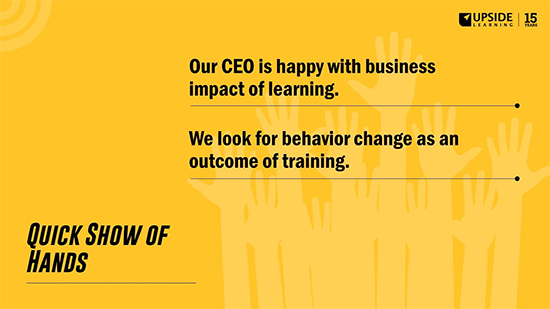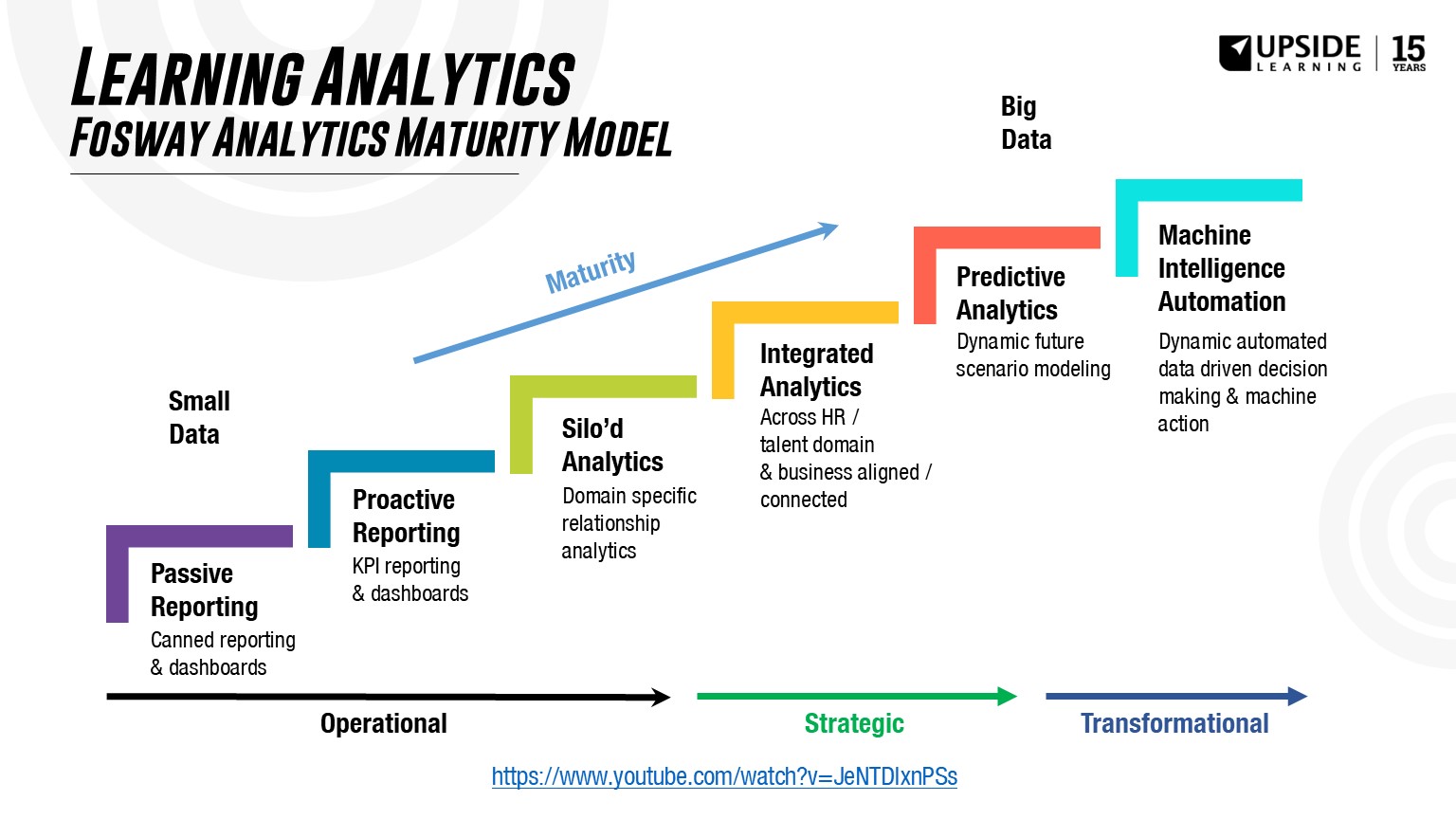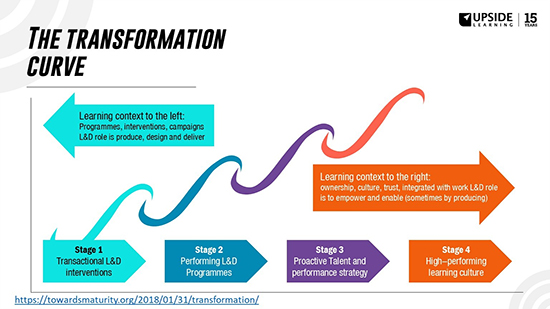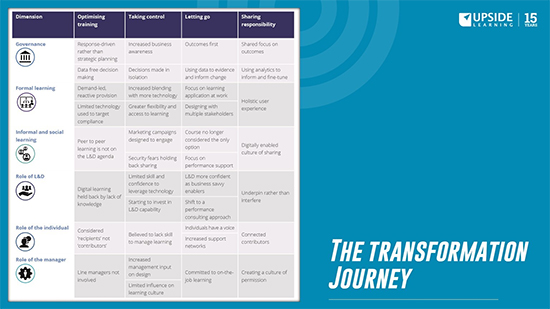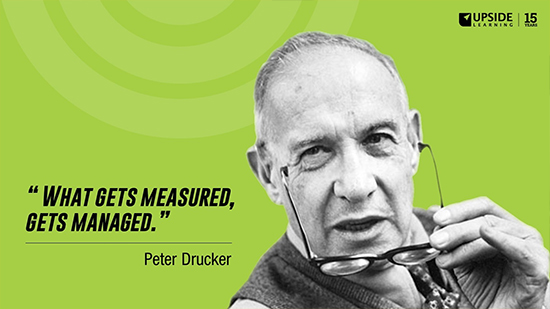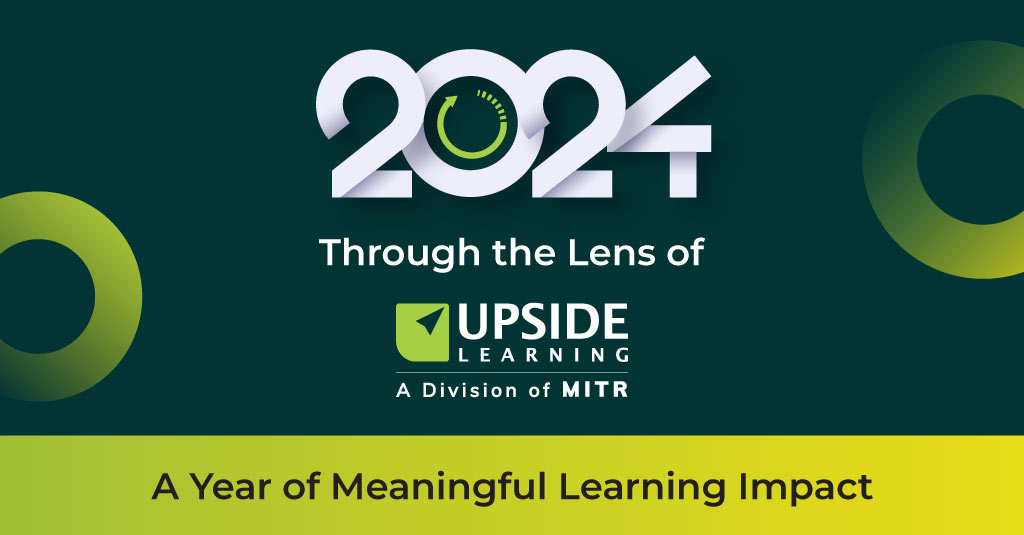This is a short version of the session I delivered in Oct’19 at the LearnX, Melbourne on how can L&D make a business impact. Here’s the complete slide deck – Make A Business Impact,
State of L&D
To kick off the session I asked for a show of hands on:
No one raised their hand for first and only 1 (out of 35-40 in attendance) raised it for second. Isn’t that telling?
But it is in complete sync with what the research also indicates – just 27% organizations are looking for evidence in form of behavior change and just 8% executives think L&D has a measurable impact. Sadly that’s where L&D is.
Learning Evaluation
Kirkpatrick & Philips Model have been used by most organizations to evaluate their L&D programs. Unfortunately at their lower levels (1 & 2) it’s at best a measure of L&D efficiency (not effectiveness) and the higher levels have been difficult to measure because isolating effects of other factors on performance is not easy and the process is long. Some have tried using Net Promoter Scores which may be a useful measure for training businesses but may not provide a measure of business impact. Very few organizations actually go down the path of measuring real business impact.
In my view, Prof Robert Brinkerhoff’s Success Case Method is a great option. The key premise of that is to focus equally on what happens BEFORE and AFTER the training EVENT and not just on the EVENT alone. It recommends ‘creating focus and building intentionality‘ BEFORE the EVENT and to ‘support performance improvement‘ AFTER the EVENT.
Learning Analytics
As shown by 2019 Global Sentiment Survey run by Don Taylor, data is becoming a priority in L&D. The top 3 trends highlighted in that survey are – Personalization/Adaptive Delivery, Artificial Intelligence, and Learning Analytics.
Analytics is still a new domain for L&D teams, except for a few early adopters. To help us understand the phases of Learning Analytics the Fosway group has mapped out the stages though which organizations will pass – starting with Operational (reporting), moving to Strategic (analytics), and finally reaching Transformational (predictive) stage.
On somewhat similar lines Josh Bersin, in his online course on People Analytics on Linkedin Learning, suggests that L&D needs to move forward from just conducting Surveys to finding Correlation between learning data and business metrics. And then onward to AI/Big Data.
The L&D Transformation Journey
Towards Maturity group has published two excellent annual benchmark reports recently. The 2018 report talked of the transformation curve that L&D need to undertake to become more impactful. From being creators of training to enabling & empowering a high-performance culture.
The 2019 report laid out the map for L&D to undertake that journey. Whichever stage you are in at the moment you have a definite set of things you can focus on and start moving.
4 Steps To Business Impact
Summarizing all of the above points here are my suggested 4 steps to Making A Business Impact.
- Align with Business, Involve Managers
This cartoon by Arun Pradhan perfectly captures the state of self patting L&D in most organizations. Course completing and great feedback counts for little if it is not aligned with the business.
L&D needs to understand the business well. Know what are the short term and long term challenges and goals and then come up with learning initiatives that support achieving those goals.
Get buy in from senior management to communicate the importance of the training, and involve line managers to further reinforce the same and provide support for application of learning after the training.
- Design for Behavior Change
Above is a great example of ‘nudge theory‘ in action. L&D too needs to leverage behavioral economics to create programs / environments that bring the change that they are after. Stand-alone training events seldom bring any behavior change, so we need to think around continuous nudges – call it ‘campaign’ if you like.
It is important to understand our learners are adults with jobs to do, so training is almost a ‘secondary’ activity for them. We need to motivate them by respecting their prior knowledge and making the design purposeful, relevant, & to fit their schedules. Storytelling, gamification, real-life scenarios, micro-learning, videos, are all useful tools to be used appropriately.
- Make Friends with Data
Level 1 & 2 data capture for training programs is at best about operational efficiency of L&D itself. However, it provides an opportunity to find correlations with business data. One of our global apparel client correlates store wise course completions with store wise retail sales and can find a definite positive correlation. Though correlation may not necessarily mean causation, it allows them to start from a better position to dig deeper and make changes where needed and observe further impacts.
xAPI also throws a host of interesting opportunities for L&D to collect much more data that we have been, and not just about learning but also for wider business parameters. It is time to build skills and capabilities in data analytics and look for small wins to get started on this path.
- Build a Learning Culture
The ultimate aim for any L&D should be to move from ‘transactional L&D interventions’ to ‘high-performing learning culture’. The Towards Maturity Transformation Journey is a useful guide for making that journey. L&D will itself need to unlearn and learn new skills along the way. It would also need to relinquish traditional authority,so as to enable social and informal learning, for it to become more widespread. L&D need to share the responsibility for learning with everyone in the organization.
These are my views on how L&D can make business impact.
Do share your thoughts?




